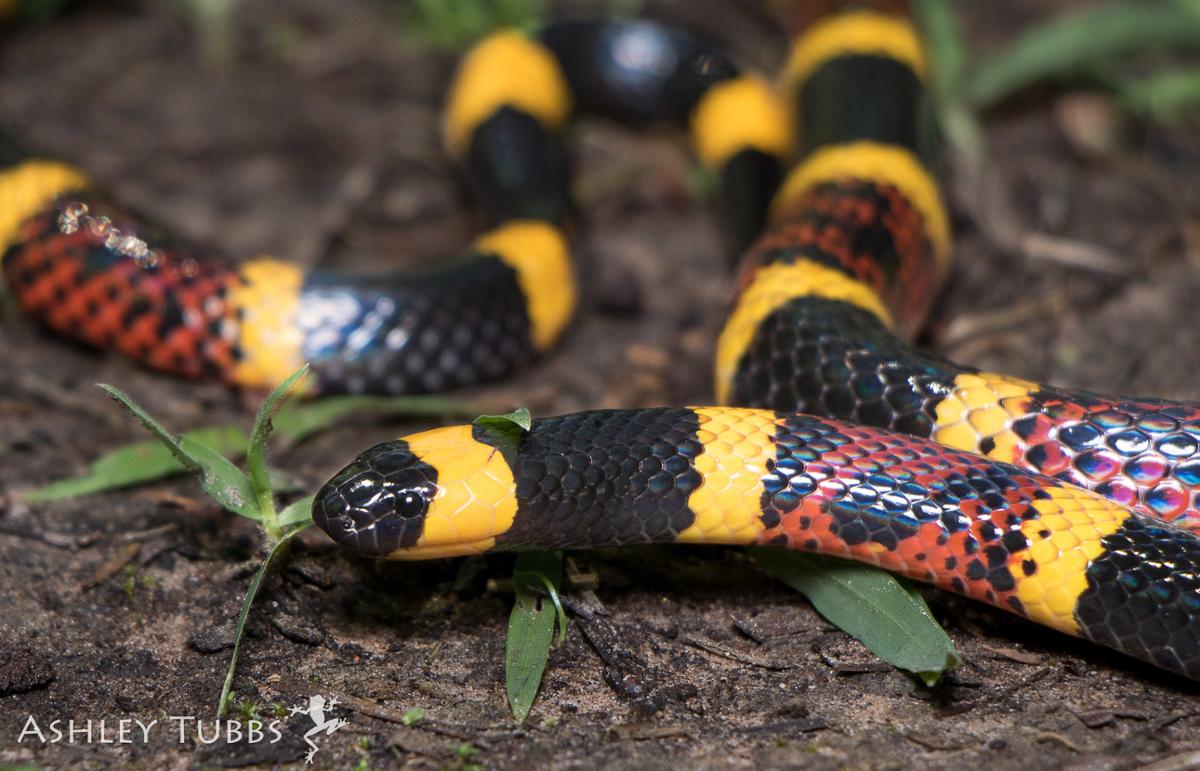Y: Is that a coral snake? Why did I agree to go hiking with you?
D: If the red and black stripes touch, then isn't it the non-venomous scarlet snake?
Y: Beats me, but I think that snake's pattern qualifies as aposematic.
D: What's that?
Y: A pattern is aposematic if it serves as a warning sign to the organism's predators that they should stay away or else.
D: But some patterns that look far out to us are actually camouflaging in a creature's natural habitat. How can scientists be sure that a pattern is aposematic, and not camouflaging?
Y: Good question. In the wild in Costa Rica, the appearance of coral snakes was thought by some scientists to be camouflaging. An evolutionary biologist showed that the snake's appearance was aposematic though by showing that birds were just as likely to avoid a coral snake if it were on a white paper background as when it was on a natural background. In Central America there are about twenty species of snakes that mimic the coral snake. This experiment also revealed that even the least impressive mimics were less likely to be attacked as a result of their aposematic mimicry of poisonous snakes.
D: Hmm. But how does a predator learn to avoid snakes of a certain pattern if the snake in question is deadly?
Y: In this case, some birds have evolved an innate avoidance of the coral snake's pattern. We know this because another biologist showed that birds raised in captivity are afraid of wooden dowels painted to resemble coral snakes.
D: Wow. On second thought, I could have that whole color order rule backwards. Maybe we should make like those birds--
Y: And get out of here? Let's go.










